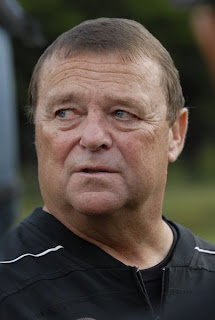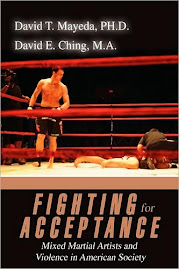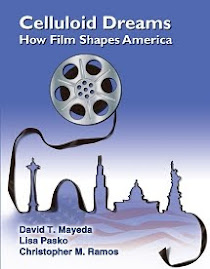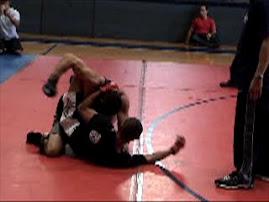 [Cross-posted on FightTicker.com]
[Cross-posted on FightTicker.com]The Independent has an excellent piece up by David Usborne about former heavyweight boxing great, Jack Johnson, who at the turn of the twentieth century was the most hated man in America. Much like Muhammad Ali (and to a much lesser degree Joe Louis) in decades to follow, the African American Johnson was hated for two primary reasons: (1) his athletic greatness provided him with a public platform; and (2) on that platform, he refused to acquiesce to the racist sentiments of his time.
Rather, Johnson scoffed in the face of calls to act as a diminutive black “house slave.” He flaunted intimate relationships with white women -- a sexist strategy in itself -- largely as a means to infuriate his harshest critics. Johnson’s legacy represents America’s horrid history in its treatment of African Americans, as detailed in Usborne’s article.
That Johnson did not bend to the bigotry of his time no one disputes. On the contrary, he is remembered, aside from his athletic prowess, for his defiance, using his growing fortune to drive the cars and live in the homes that white folk considered to be theirs and beyond the descendants of slaves. He dated white women and made no attempt to hide it. When he died in a car crash in 1946 aged 68, he had had three wives, all white.
But Johnson's greatest sin was his talent in the ring. His success was an affront to white America. Instantly after he became world champion, a search was launched for a white man who could take the title back. The "Great White Hope", as the sports writers called him, was James Jeffries, a former champion himself who found himself dragged out of retirement to meet Johnson. The two men met in a makeshift ring in Reno, Nevada, with the nearly all-white crowd booing Johnson and singing along when the ring-side band played "All Coons Look Alike to Me". Johnson was declared the winner after 15 rounds. Rioting broke out all across America.
Of immediate concern, Usborne’s piece calls for United States President, Barack Obama to pardon Johnson posthumously for violation of the Mann Act, which barred the transportation of women across state lines. Although the act was not enforced upon white men who violated its sexist precepts, it was used to tarnish Johnson’s accomplishments and squelch his symbolic influence for the black community. Ultimately, it led to him fleeing the United States before being incarcerated upon his return.
Senator John McCain, an ardent boxing supporter, is behind the resolution to pardon Johnson. Despite President Obama’s most recent encounters with race relations, which has eroded into a pop culture spectacle of beer guzzling, Usborne initially writes the pardon may not be so probable.
Oddly, (President Obama) may not welcome it. Yesterday, the President was hosting Henry Louis Gates, the black professor from Harvard, and the white policeman who arrested him for allegedly breaking into a house that turned out to be his own. Mr Obama has often said he wants to transcend race himself. Yet he can't get away from discussion of it.
It is unthinkable that he would not sign such a pardon for Johnson, whose baleful story – and its place in the tortured odyssey this country has taken from slavery to true racial integration (if it has even got there yet) – is too compelling to ignore. He secured the world title precisely 100 years before Mr Obama won election as America's first black president.
Usborne closes, however, with the following statements, at least hinting that a so-called “post-racial” society has yet to be realized. “Fool or no fool, Johnson was wronged by his own country for daring to ignore and to shatter social barriers created by ignorance. Mr. Obama will surely sign his pardon because he knows a bit about this himself.” With this latter statement, I agree.











